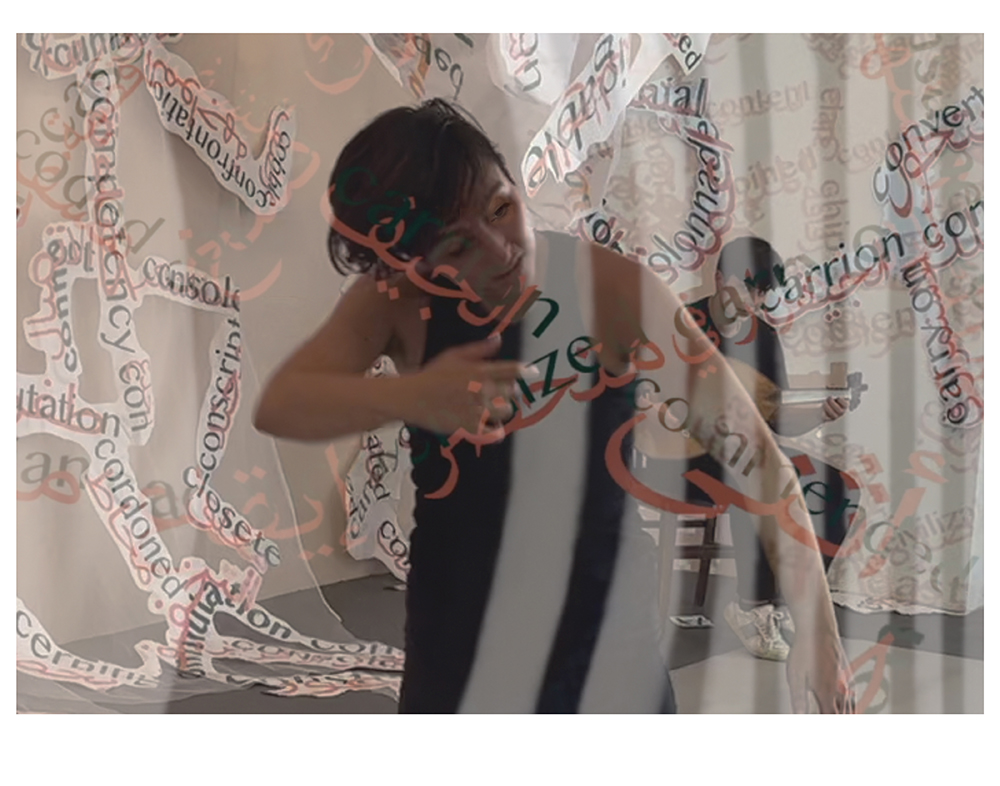
Colonial Colonnade
Arabic, often misunderstood and feared when seen in “Western” contexts, is accompanied by its English translation thus normalizing its presence to question and assert historical conceits and lazy assumptions. “Colonial Colonnade” visually merges English and Arabic into one space as the basis for improvisational text, image, spoken word, dance, and sound. The Puffin grant enabled Bittar to create moveable and musical words and letters including steel footholds, acrylic and resonant steel hanging letters and symbols, and supple curtains of words for participants to manipulate. A series of short surrealist videos acted as sketchbooks for what is possible. “Colonial Colonnade” intertwines, layers, and demystifies how English and Arabic words may “live” together to promote understanding about the Arab American experience of living, growing up, and immigrating to a “Western” country and culture that continually defines you as other, different, and alien. “Colonial Colonnade” invites all to experience its multi-faceted, immersive, non-linear, and interdisciplinary contexts to create new forms of expression. Currently in Los Angeles, “Colonial Colonnade” will expand its scope at the Arab American National Museum in Dearborn, Michigan from October 2023 into 2024. Bittar’s two month residency in October-November 2023 will further explore the projects potentiality. Bittar experienced for six weeks early in 2021. Bittar recorded lists of words from what she calls her “diaspora trance of utterances.” These words were carefully distributed onto an Arabic star matrix pattern. The term diasporic utterances give meaning to the trance as derived from Bittar childhood experience of learning of English when a new immigrant from Lebanon in the late 1960s. These word trances continue today for Bittar but not as intensely as the first six-week run in 2021. Most of the words began with the letter “c” project and strongly suggest the experiences of colonial subjects and colonial legacies as textual ghosts and present day traces Arab Americans and other people of color experience in America. All images, videos, and links are created by Doris Bittar(c).
